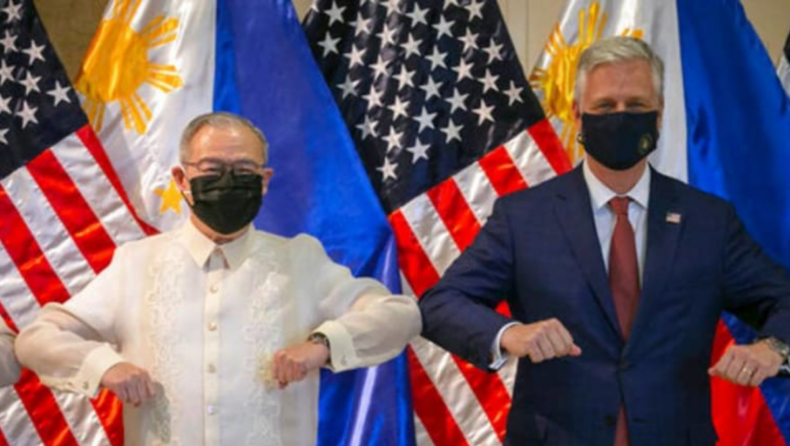On Saturday, August 6, Philippines President Ferdinand Marcos Jr. met with America’s top diplomat, Antony Blinken, as the two nations work to strengthen their ties amid rising regional tensions. Secretary of State Antony Blinken reassured the Philippines that if they were attacked in the South China Sea, the US would defend them, attempting to ease fears about the scope of the US commitment to a mutual defense treaty.
Highlights of the meeting
In his brief introductory remarks, Marcos mentioned recent events including the invasion of Ukraine and US Speaker Nancy Pelosi’s trip to Taiwan earlier this week, which had spurred China to conduct military drills around the self-governing democratic island.
Marcos attempted to downplay the diplomatic crisis surrounding Taiwan and expressed his opinion that Pelosi’s visit “did not heighten the severity” of an already tense situation.
“We have been operating at that level for quite some time, but we have grown accustomed to the concept,” said Marcos.
Blinken declared that a 70-year-old defense agreement with the Philippines was “ironclad” during discussions in Manila where talk of simmering US-China tensions over US House of Representatives Speaker Nancy Pelosi’s travel to Taiwan predominated.
Blinken stated at a press conference that “an armed strike against Philippine armed troops, public vessels, and planes will invoke US mutual defense commitments under that treaty.” The Philippines is the United States’ incomparable ally, partner, and friend.
Blinken also became the highest-ranking US official to meet Ferdinand Marcos Jr., the current president, who is also the son of a late strongman whom Washington assisted in fleeing into exile in Hawaii after a 1986 “people power” movement that ended his two-decade rule.
The Philippines serves as a focal point for the US and China’s geopolitical competition, which makes it difficult for Marcos in maintaining relations between the two superpowers.
Additionally, he will be under pressure from within his own country to oppose China in the South China Sea without upsetting its authorities.
Predecessor Rodrigo Duterte caused a rift in US-Philippines relations by aligning with China, promoting well-known anti-US rhetoric and threats to sever their military connections.
Marcos hasn’t visited the USA for more than a decade partly due to a contempt of court order for his denial to cooperate with a Hawaii court, which in 1995 ordered the Marcos family to return $2 billion of lost state money to victims of abuses by the state under his father’s regime.
Virtual meeting with Manalo
In a virtual conference Enrique Manalo, the foreign secretary of the Philippines said to Blinken that We cannot afford any rise in regional tensions.
In response, Secretary Blinken told, that the US was equally determined to prevent a crisis and emphasized the significance of the relationship between Washington and Manila.
Later, Manalo referred to the US as a “dear friend” and outlined a series of initiatives aimed at fostering high-level cooperation between the two nations. These initiatives included a potential meeting between Marcos and US President Joe Biden on the sidelines of the upcoming United Nations General Assembly. Also, Joe Biden invited Marcos to Washington, D.C., and the two sides were negotiating a good time for him to visit. In addition, both parties agreed to hold another 2+2 security and international affairs conference at the beginning of 2024.
Also Read:https://www.voanews.com/a/asean-9-summit-includes-plea-for-peace-in-south-china-sea-/6689616.html













